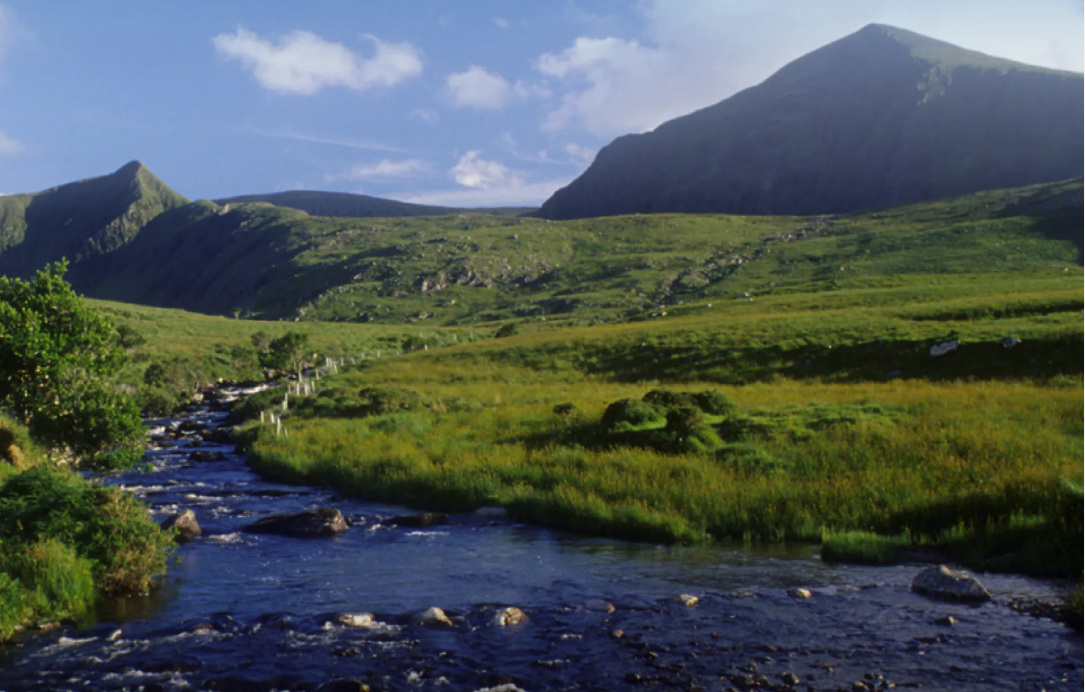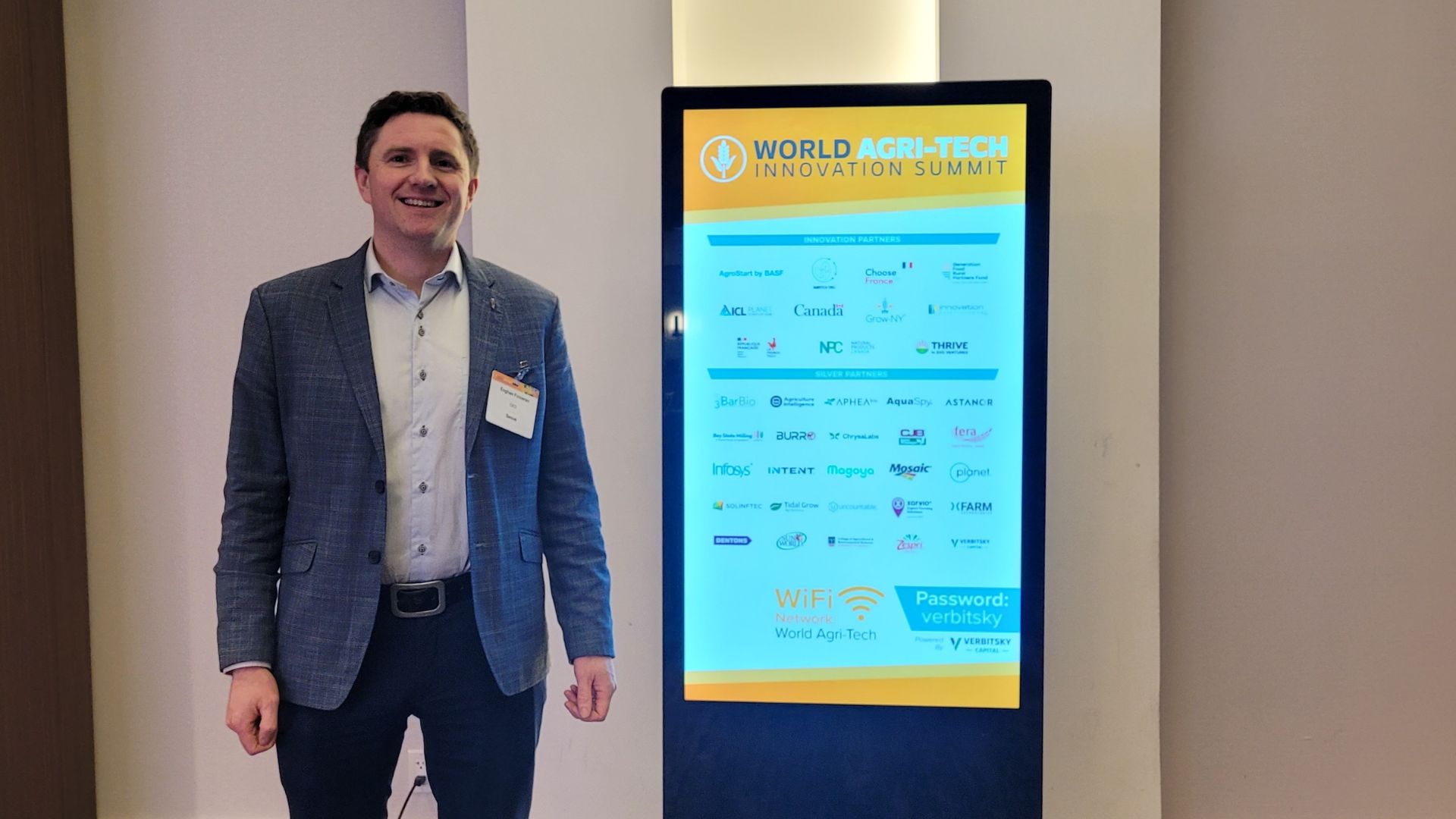2024 has been a whirlwind year for Senus. With a new company name, state-of-the-art offices, expansion into seven new countries, new products, partnerships, and sectors, it’s been a significant period of growth. All of which was delivered with dedication and good humour by the Senus team.
A New Name, Same Powerful Team and Culture
We started 2024 as FARMEYE and finished it as Senus. The FARMEYE name served us well, establishing a strong and reputable brand in the Irish market. However, with our growing presence beyond Ireland, it became clear that a new name was needed to reflect our expanding focus on international markets and new industry sectors.
2024 marked the year where we now service more hectares internationally than within Ireland. While we continue to lead in technology solutions for the AgFood and Beverage industries, we have broadened our scope to include the Finance and Environmental Engineering sectors, which prompted the name change. The new name was selected to resonate with these expanding markets and sectors.
What’s in a Name
The name Senus is derived from the ancient Roman name for the River Shannon, originally called the Senus by the cartographer Ptolemy, who created the first map of Ireland. Just as the River Shannon is a crucial artery for nature, life and commerce in our part of Ireland, so Senus will act as our highway to new global opportunities for sustainability and environmental stewardship software.
This year, we also focused on solidifying and documenting our company values. One of the great things about Senus is that everyone, from the General Manager to our summer interns, understands what we stand for and the purpose behind our work every day. Our purpose is to improve the lives of farmers, land stewards and the environment. Ensuring that those who enhance and protect nature are duly rewarded is paramount. To achieve this, auditable metrics are essential, and Senus excels at developing technologies that verifiably measure nature.
Launch of New Products:
At the National Ploughing Championships in September, we were grateful to have MEP Ciaran Mullooly launch our Farmer Water Quality Reports. Produced in conjunction with the EPA, these innovative field-by-field, farm-by-farm reports were the first of their kind, allowing farmers to see, at a glance, the key risk factors around water quality on their own farms. This year also marked the launch of our Biodiversity Maps, enabling key brand customers to enhance their capacity for measuring nature and ecosystem services.
Awards and Recognition
Our achievements were underscored by several awards, including the prestigious FBD Better Farming Awards, where we were delighted to secure the Best AgriTech Science Product award. We were also acclaimed in the Sunday Business Post’s “Hot 100 startups”.
We are truly fortunate to lead such a talented and dedicated team of people, whose positive feedback this summer earned us a place on The Sunday Times’ list of best places to work.

Building Trust Through Verified Nature Measurement
As we sit down to our Christmas dinners this year, it’s a good opportunity to reflect on what’s on our plates and the impact it has had on both nature and the farmers who produce our food.
Trust within the food chain has broken down at two critical points. The first is at the farm level, where farmers are increasingly asked to provide more data to food processors or co-ops. From carbon-footprinting surveys to Red Tractor audits, farmers feel they are constantly jumping through hoops to provide data, yet they see little valuable feedback or financial reward for their efforts.
At the other end of the chain, growing mistrust exists between consumers and food companies/retailers. The recent controversy surrounding Bovaer use on Arla-supplying dairy farms in the UK highlights this issue. Public perceptions, whether scientifically accurate or not, have previously decimated farming industries. The BSE crisis and its link to CJD in the late 1990s, for example, devastated the beef sector for five years.
Sustainable Soil Management and Emission Accounting
We don’t need to rely on quick fixes or pharmaceutical solutions like methane-inhibiting feed additives when the solution is right beneath our feet. Sustainable soil management—especially through grazing ruminants—is key. Our soils have the potential to store over 1,500 billion tonnes of carbon, more than the atmosphere and all plants and trees combined. It’s critical that changes are made in how emissions from grazing ruminants are accounted for.
The issue brought to light by the public and farmer outcry over Bovaer use in the UK is not just about consumer misinformation or bad PR. The real problem lies with fossil fuel use, not the cows. Yet, emissions from cows are often treated the same as those from car exhausts, leading to misguided solutions to a problem that doesn’t exist.
Similar Challenges Facing Wool, Meat, and Dairy
In October, our CEO Eoghan Finneran attended the Campaign for Wool event at the British Wool Board HQ in Bradford, thanks to Dalena White. Wool is facing a challenge similar to that of meat and dairy. The global textile industry has been designed to favour synthetic materials produced from fossil fuels, neglecting natural materials such as wool and cotton. This has reached a point where the EU Green Claims Directive may make advertising wool products illegal as early as next year.
This issue stems from the same nonsensical misunderstanding: methane emissions from sheep are often treated the same as those from car exhausts, without considering the biogenic methane cycle and the crucial role of carbon sequestration in soils.
There are two key solutions to the challenges posed by both cows and sheep:
- Identify the real problem: Mischaracterising methane from grass-fed ruminants as a pollutant is incorrect. If cow or sheep populations remain relatively stable, they have no significant impact on greenhouse gas levels or climate change. Ruminant methane emissions are not the same as those from fossil fuels. Fossil fuel use is the true concern, yet it continues to rise at a rate three times faster than cattle numbers. As regenerative agriculture proponents often say, “It’s not the cow, it’s the how.”
- Verifiably measure impact: Rather than relying on prescription solutions like feed additives or partial accounting, we should focus on measuring actual impact. Microplastics from synthetic clothes aren’t accounted for in their environmental impact, yet every time they are washed or discarded, they contribute harmful plastics to the environment. In contrast, wool and cotton naturally degrade and regenerate soil. By measuring the soil, fertiliser inputs, and using MRV (Measurement, Reporting, and Verification), we can rebuild a trusted food chain.
At Senus, we continue to work on developing new technologies to support verified measurement, for both land stewards and for nature. Next year promises to bring many more positive headlines as we bring these solutions to the global market.
Finally, we’d like to wish all our farmers, customers and partners, a Happy and Peaceful Christmas, nourished with trust-worthy, grass-fed meat and dairy, and may all your socks be warm and woolly!



